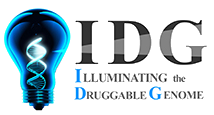Drug results: 21
| angiotensin II | Angiotensin II is a naturally occurring peptide hormone of the renin-angiotensin-aldosterone system (RAAS) that causes vasoconstriction and an increase in blood pressure. Angiotensin II raises blood pressure by vasoconstriction and increased aldosterone release. Direct action of angiotensin II on the vessel wall is mediated by binding to the G-protein-coupled angiotensin II receptor type 1 on vascular smooth muscle cells, which stimulates Ca2+/calmodulin-dependent phosphorylation of myosin and causes smooth muscle contraction. |
|
| fimasartan | an angiotensin II receptor antagonist |
|
| sparsentan | Sparsentan is a single molecule with antagonism of the endothelin type A receptor (ETAR) and the angiotensin II type 1 receptor (AT1R). Sparsentan has high affinity for both the ETAR (Ki= 12.8 nM) and the AT1R (Ki=0.36 nM), and greater than 500-fold selectivity for these receptors over the endothelin type B and angiotensin II subtype 2 receptors. Endothelin-1 and angiotensin II are thought to contribute to the pathogenesis of IgAN via the ETAR and AT1R, respectively |
|
| olmesartan medoxomil | Olmesartan blocks the vasoconstrictor effects of angiotensin II by selectively blocking the binding of angiotensin II to the AT1 receptor in vascular smooth muscle. |
|
| azilsartan medoxomil | an angiotensin type 1 receptor blocker; receptor blocker |
|
| eprosartan | angiotensin II receptor antagonist; structure given in first source |
|
| losartan | An antagonist of ANGIOTENSIN TYPE 1 RECEPTOR with antihypertensive activity due to the reduced pressor effect of ANGIOTENSIN II. |
|
| saralasin | An octapeptide analog of angiotensin II (bovine) with amino acids 1 and 8 replaced with sarcosine and alanine, respectively. It is a highly specific competitive inhibitor of angiotensin II that is used in the diagnosis of HYPERTENSION. |
|
| irbesartan | A spiro compound, biphenyl and tetrazole derivative that acts as an angiotensin II type 1 receptor antagonist. It is used in the management of HYPERTENSION, and in the treatment of kidney disease. |
|
| tasosartan | angiotensin II antagonist; structure given in first source |
|
| valsartan | A tetrazole derivative and ANGIOTENSIN II TYPE 1 RECEPTOR BLOCKER that is used to treat HYPERTENSION. It has been approved in combination with sacubitril (under the name ENTRESTO) for the treatment of heart failure. |
|
| telmisartan | A biphenyl compound and benzimidazole derivative that acts as an angiotensin II type 1 receptor antagonist. It is used in the management of HYPERTENSION. |
|
| candesartan cilexetil | a nonpeptide angiotensin II receptor antagonist |
|
| pimobendan | produces arterial & venous dilatation in dogs; structure given in first source |
|
| miconazole | An imidazole antifungal agent that is used topically and by intravenous infusion. |
|
| rosiglitazone | A thiazolidinedione that functions as a selective agonist for PPAR GAMMA. It improves INSULIN SENSITIVITY in adipose tissue, skeletal muscle, and the liver of patients with TYPE 2 DIABETES MELLITUS. |
|
| enalapril | Enalapril, after hydrolysis to enalaprilat, inhibits angiotensin-converting enzyme (ACE) in human subjects and animals. ACE is a peptidyl dipeptidase that catalyzes the conversion of angiotensin I to the vasoconstrictor substance, angiotensin II. Angiotensin II also stimulates aldosterone secretion by the adrenal cortex. Inhibition of ACE results in decreased plasma angiotensin II, which leads to decreased vasopressor activity and to decreased aldosterone secretion. |
|
| aliskiren | Renin is secreted by the kidney in response to decreases in blood volume and renal perfusion. Renin cleaves angiotensinogen to form the inactive decapeptide angiotensin I (Ang I). Ang I is converted to the active octapeptide angiotensin II (Ang II) by ACE and non-ACE pathways. Ang II is a powerful vasoconstrictor and leads to the release of catecholamines from the adrenal medulla and prejunctional nerve endings. It also promotes aldosterone secretion and sodium reabsorption. Together, these effects increase blood pressure. Ang II also inhibits renin release, thus providing a negative feedback to the system. This cycle, from renin through angiotensin to aldosterone and its associated negative feedback loop, is known as the renin-angiotensin-aldosterone system (RAAS). Aliskiren is a direct renin inhibitor, decreasing plasma renin activity (PRA) and inhibiting the conversion of angiotensinogen to Ang I. Whether aliskiren affects other RAAS components, e.g., ACE or non-ACE pathways, is not known. |
|
| captopril | A potent and specific inhibitor of PEPTIDYL-DIPEPTIDASE A. It blocks the conversion of ANGIOTENSIN I to ANGIOTENSIN II, a vasoconstrictor and important regulator of arterial blood pressure. Captopril acts to suppress the RENIN-ANGIOTENSIN SYSTEM and inhibits pressure responses to exogenous angiotensin. |
|
| benazepril | prodrug of benazeprilat inhibit angiotensin-converting enzyme (ACE) and results in decreased plasma angiotensin II, which leads to decreased vasopressor activity and to decreased aldosterone secretion |
|
| trandolapril | The effect of trandolapril in hypertension appears to result primarily from the inhibition of circulating and tissue ACE activity thereby reducing angiotensin II formation, decreasing vasoconstriction, decreasing aldosterone secretion, and increasing plasma renin. Decreased aldosterone secretion leads to diuresis, natriuresis, and a small increase of serum potassium. Trandolapril is deesterified to the diacid metabolite, trandolaprilat, which is approximately eight times more active as an inhibitor of ACE activity. |
|



